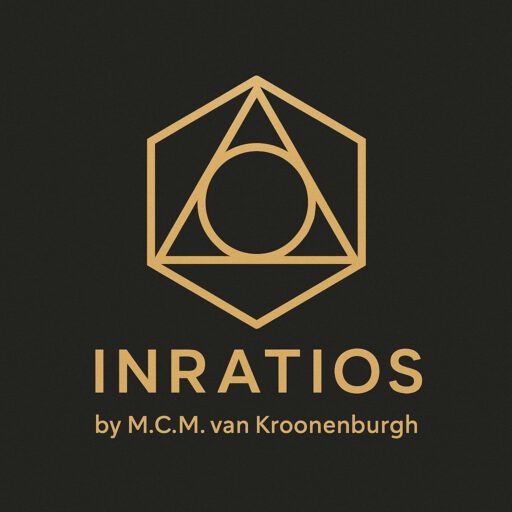What I thought I was building
From Pi to pattern – A personal geometry shift (2/4)
Bounding boxes and the promise of visual logic
As explained in my previous blog, I started with a circle and added a square.
Not just any square, a bounding box. A simple container around the circle.
What intrigued me was the mutual dependency:
The square defines the circle’s diameter.
The radius is half the side of the square.
And the circle (when perfectly inscribed) reveals back a proportional truth about the square.
It was a clean feedback loop. A geometric reciprocity.
But beyond the math, there was something else.
This box could scale.
Not just numerically, but visually.
It made calculations easier.
But more importantly, it made them visible.
And in a digital world, what’s more valuable than visualization?
That’s when I started to wonder:
If this could scale cleanly, in shape, in space, in code, what else could it do?
What I thought I was building
At first, I thought I was just trying to work on a tiny mathematical gap.
That leftover sliver when you try to wrap a radius around a circle, the part that π defines but can’t express in rational or visual terms.
I wanted to work on “closure”, defining the complete circle.
Working with the circle in a more exact way.
Not theoretically, but practically.
Because in the real world, a circle has a complete perimeter. A definite area.
Not an approximation, but a “whole” presence.
So I began working with the idea that a circle always occupies 78.54% of its square (when perfectly inscribed, relative to the bounding square): in area, and in perimeter.
That ratio (π/4) gave me a shortcut.
I could scale.
I could multiply.
I didn’t have to calculate π each time.
The square told me everything I needed to know.
It was elegant.
Useful.
But not new.
But something about it kept nagging at me.
What pixels made possible
That’s when the digital perspective came in to focus with me.
In the digital world, shapes aren’t continuous.
They’re composed of pixels.
Each pixel is either on or off. They are binary.
But that very simplicity brought me something powerful:
I could let the computer count them (the pixels that make up a geometric figure).
I could let the computer count how many pixels are occupied.
I could let the computer compare pixel density.
I could test how well a shape fits its bounding box, not through math, but through measurement.
And more importantly, not just I could do this. The computer is able to do this, this makes it accessible for anyone who can use a computer and more importantly the it is accessible for computer programs and AI.
This makes the Geometric Ratio Model (GRM) more than clever geometry.
It became a tool for precision. But more importantly, it became a tool for digital systems to comprehend visual structure.
A way to validate shapes without relying on irrational constants.
By counting and scaling, I could describe not just a form.
More importantly, I could describe how closely it adhered to its ideal.
And suddenly, GRM wasn’t just about circles anymore.
It became about efficiency.
About recognition.
About what a visual system (like AI) might do if it could understand proportion before it ever recognized a shape.
A shift I didn’t see coming
That’s when I began to see not just a pattern, but a new way of structuring visual logic. The question had changed: from “how to measure better” to “how to see differently.”
GRM, I realized, might be more than a model.
It could be a layer, embedded in AI, CAD systems, image recognition tools.
It could inform prompts, or be part of the prompt itself.
It could validate deviation not as error, but as identity.
And if that is true, we might need to rethink how we see shapes,
and more importantly, how we see deviations.
Not as failure.
But as a fingerprint.
That’s where I’ll go next.
→ Blog 3: What I Actually Found
How GRM became a way of seeing, not just a way of calculating.

